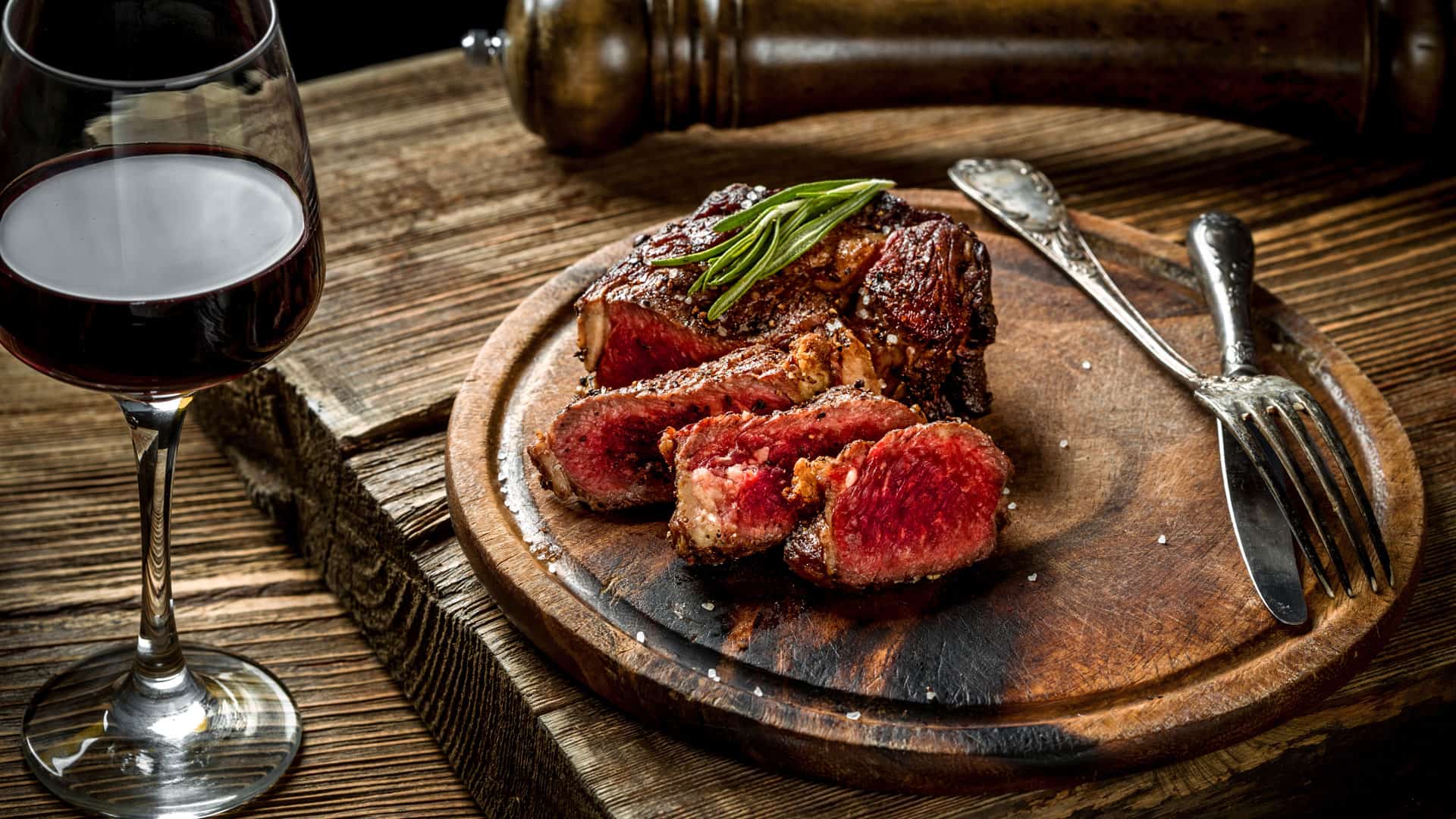The art (and pleasure) of choosing the right wine for beef dishes
Wine pairing, i.e. the art, or actually it is almost a science in itself, of determining which wine goes with which food, is a huge playground. This also applies to the original topic of this blog post: Which wine really goes best with dishes of and with which red meat. However, the question basically already implies the answer. Because not all red meat is the same. This is probably obvious to even the most inexperienced observer straight away.
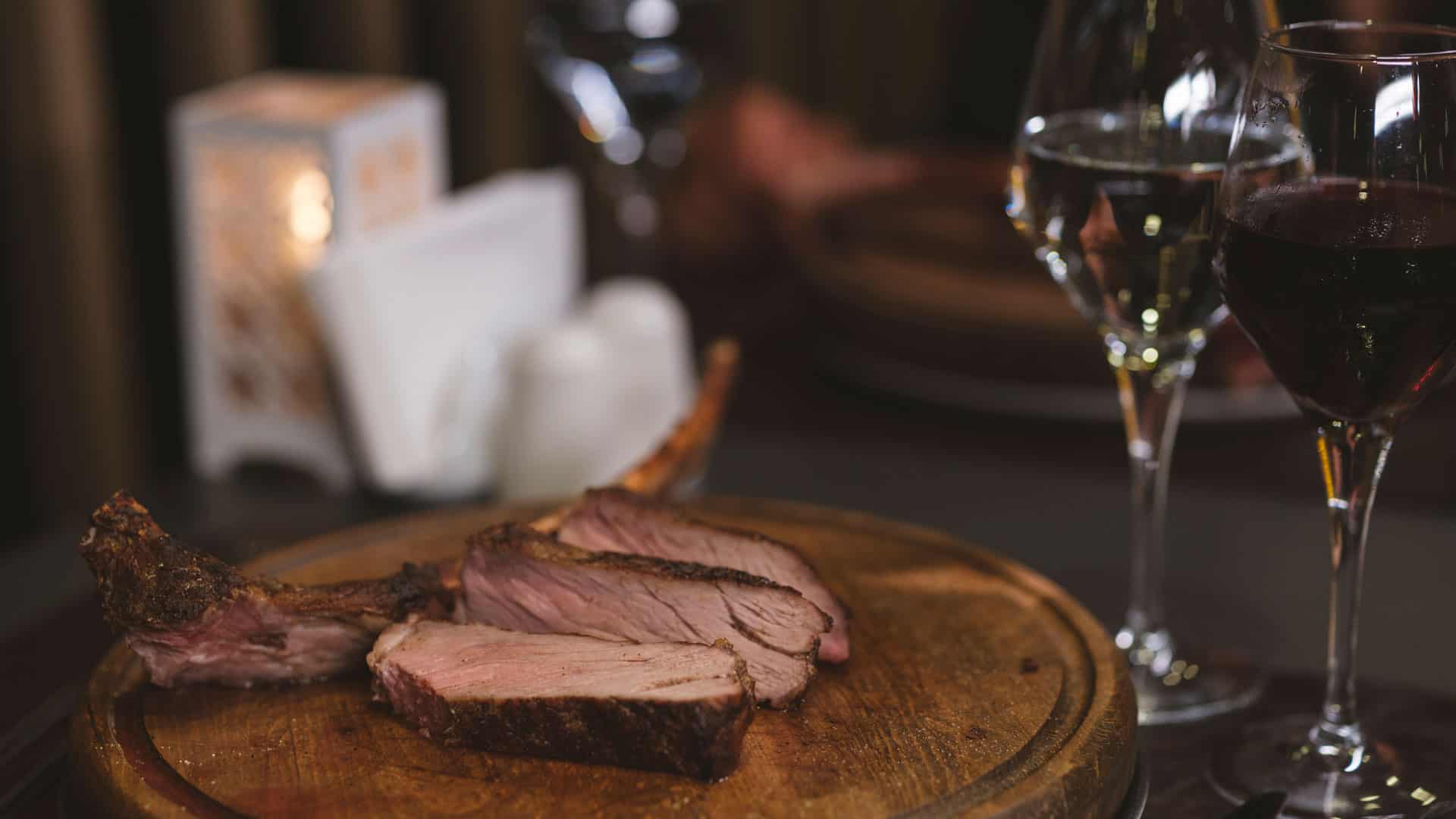
The fact that red meat is not just red meat, to pick up the thread again, also means that you cannot in good conscience proceed according to the watering can principle and simply “pour” any red wine over the huge range of red meat dishes – in the truest sense of the word. The whole thing is much more complex and much more difficult, but it should not end in endless novels and frustration because at the end of the day (in the case of this article) the reader may not get the long-awaited and redemptive tip they are looking for (and then possibly drown their frustration in a glass of wine).
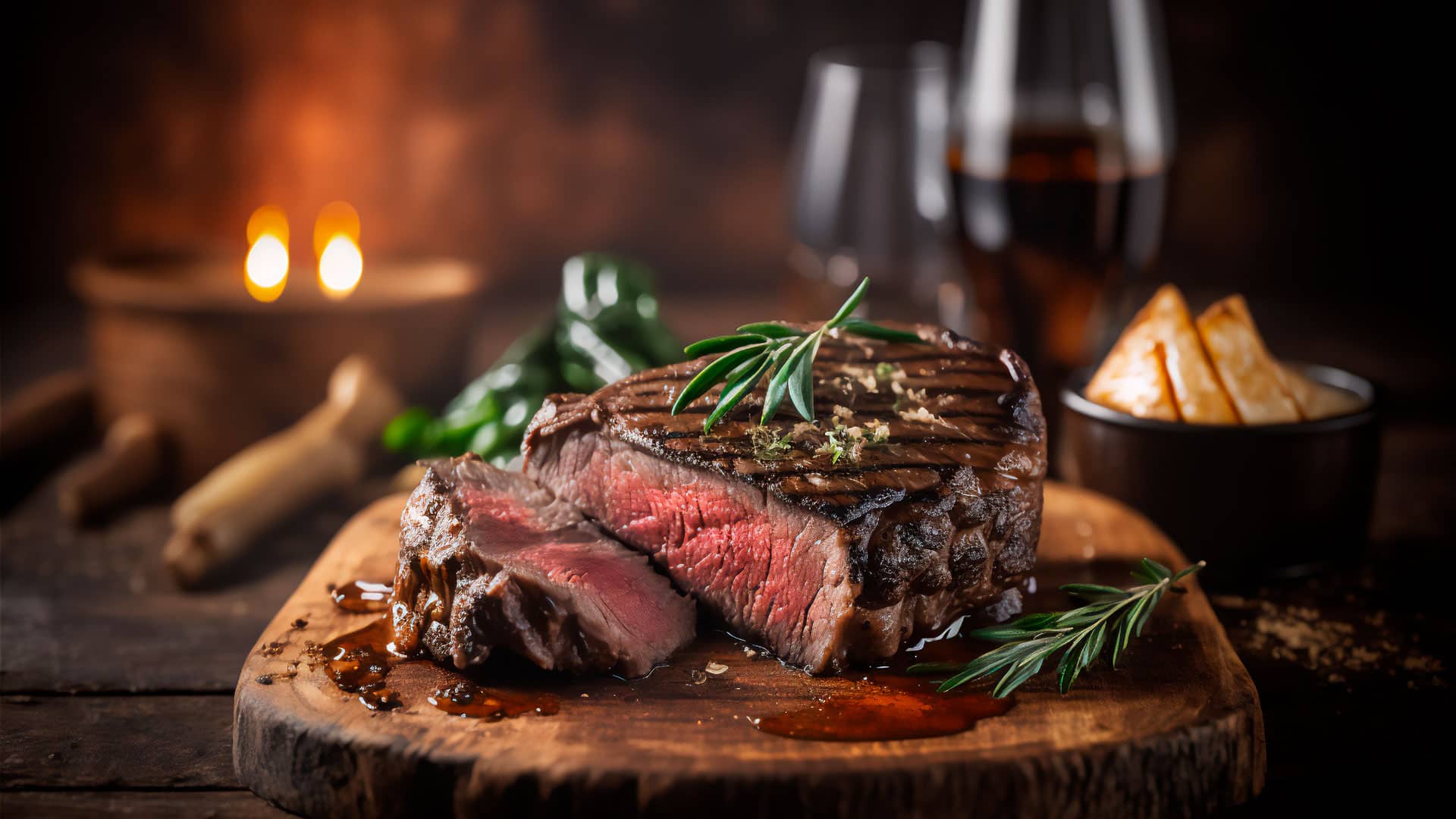
This will give you an initial idea of how diverse the topic is: When wine pairing with red meat, a basic distinction is made between beef, lamb and game. Then you need to consider whether the meat is lean or rather high in fat. This is followed by the various preparation methods. A cooked piece of meat requires a different wine than a piece of roast meat, a roast, a grilled or a braised meat dish. And that is by no means the end of the story. Because depending on the (filling) side dishes, and that’s not even taking into account the different variations of sauces and spices/marinades, it’s once again necessary to fine-tune and differentiate. As you can see, the whole thing is almost like the famous search for a needle in a haystack. Sherlock Holmes would have had great fun with it. Nevertheless, we’ll get straight to work, but divide the topic into different articles. In this article, we discuss the pairing of beef dishes with wine. And in three further blog posts, we will then turn our attention to the topics of wine and lamb, wine and game and wine and BBQ.
Wine and beef – clash of the titans, or when proteins meet tannins
If there is one pairing in the kitchen that can be described as ideal, it is red wine and beef. There are various reasons for this, but one in particular comes to the fore. We are talking about the perfect liaison of tannins and proteins. The tannins in wine, also known as tannins, often make the red wine feel furry on your tongue. Not without good reason, as these substances literally tan your tongue and cause the surface to contract, also known as astringent. However, as soon as the red wine comes into contact with a piece of beef, something simply wonderful happens in a magical way every time. Thanks to this pairing, the tannins, which are still so dominant and rebellious, become almost tame and blend harmoniously into a perfect palate. The reason for this is the proteins in the flesh. They bind the tannins and turn the supposedly red rebel into a cuddly hangover. And the best thing about it: no matter what you cook, it is suitable for all cuisines of the world!
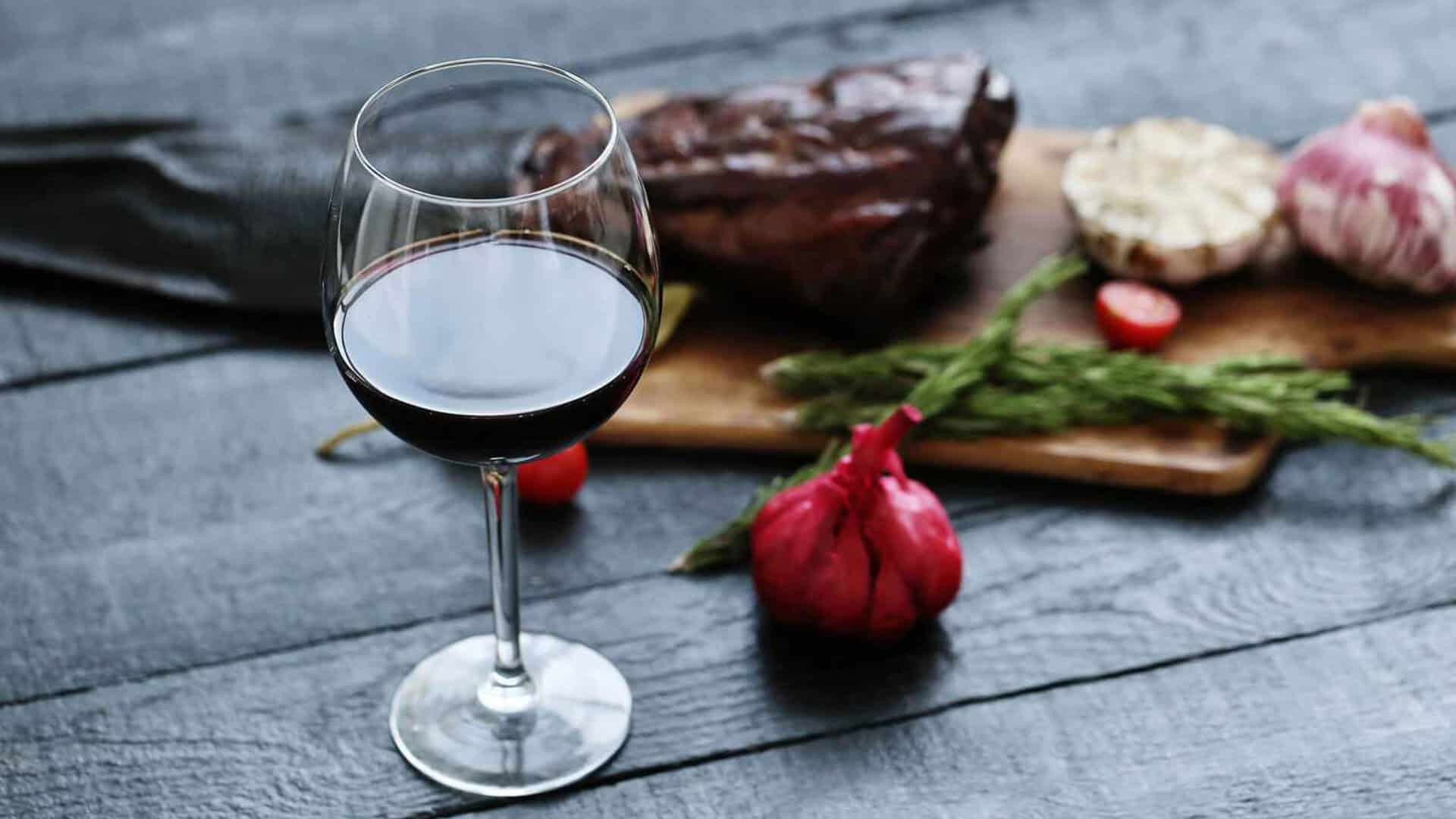
In addition, and before we finally dive into the depths of wine pairing with beef, there are a few more generalities about pairing wine with beef that we would like to share with you in advance.
It’s the salt in the soup, pardon the meat
If you want your chosen red wine to shine with its fruity aromas, then be sure to add salt. All red wines come with a sometimes stronger, sometimes less bitter taste, thanks to the tannins. The red wine owes a large part of its complexity to this tart taste, but nobody wants this to turn negative and become too dominant. That’s why you reach for the salt. Like a tamer, it has a taming effect on the bitter notes. It helps the wine to unfold and present itself brilliantly in the robe of its fruity notes. All it takes is a few grains of fleur de sel on your beef dish to allow powerful red wines to reach top form in a playfully light way – you will be pleasantly surprised by the taste!
Some like it hot, beef likes (above all) roasted flavors
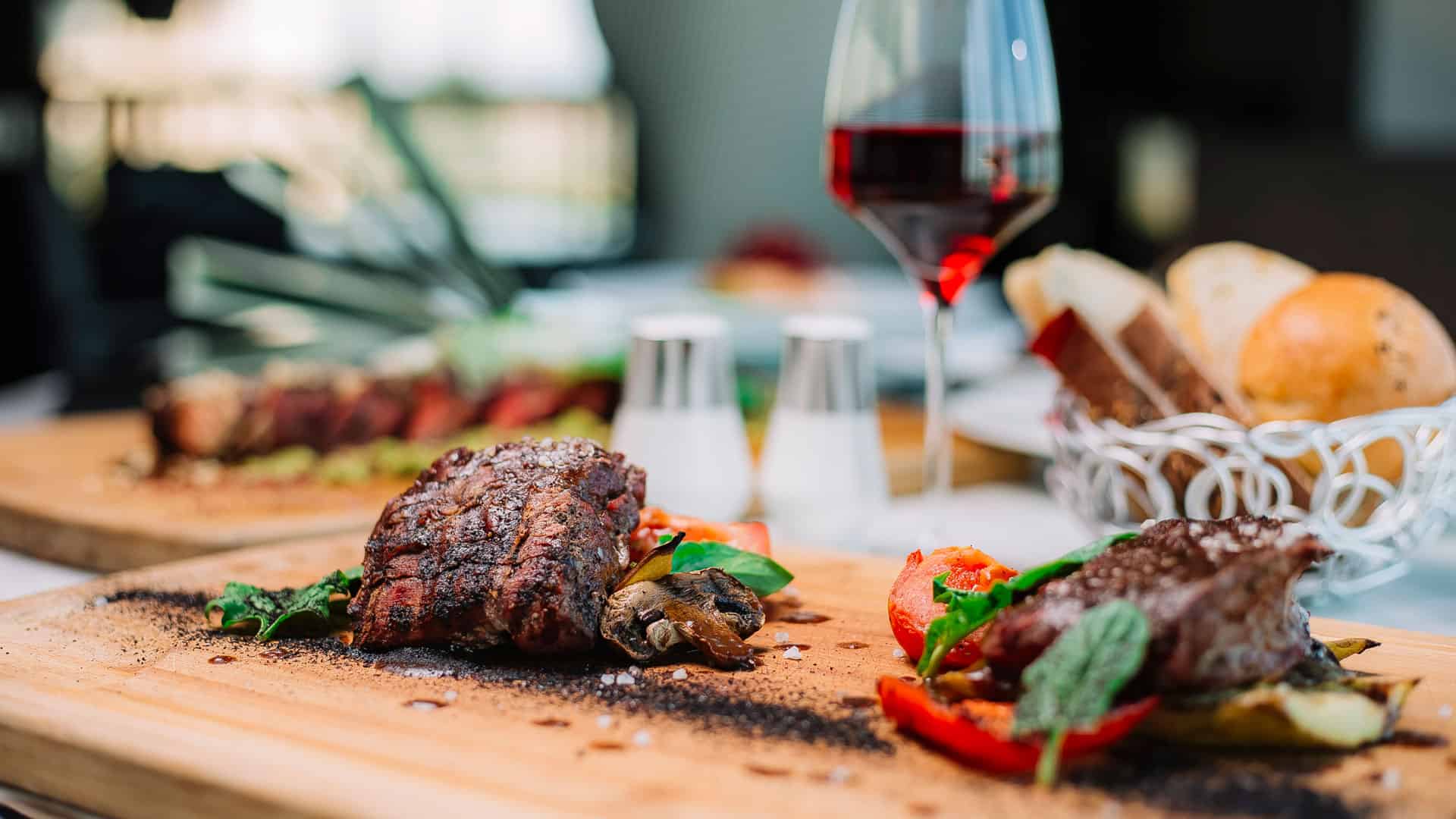
Even in the Bible, it was an eye for an eye, a tooth for a tooth. Of course, this passage is not quite so martial. Quite the opposite. In our case, repaying like with like even ensures that the positive is reinforced. We’re talking about the roasted aromas. If you decide to prepare your piece of beef as a roast, braised or grilled dish, you will enhance it with roasted flavors. These aromas develop at temperatures of around 140° Celsius. The process by which the meat is browned and naturally flavored is called the “Maillard reaction” after its inventor, the French scientist Louis Camille Maillard (1878-1936). The roasted aromas obtained in this way go perfectly with red wines that have also been given roasted aromas along the way. How does this happen? Well, practically all wines that have matured to perfection in the wine cellar in barriques, i.e. oak barrels, come into contact with roasted aromas. The reason for this is that the coopers burn out the inside of the barrique barrels piece by piece beforehand, also known as “toasting”. Conversely, preparing beef with only light roasted or braised aromas means that you should opt for a wine that tends to be more acidic and has only low tannins. In this constellation, the aromas harmonize perfectly with the acidity and emphasize the tannins present. Try it out and discover the perfect combination.
Fat calls for power, and spiciness calls for sweetness
Tender and lean red meat from beef, for example a fillet, does not need a loud, loud wine next to it in the glass. The delicacy and tenderness of the fillet harmonize much better with a well-balanced red wine that has significantly less tannin. If, on the other hand, you are preparing a piece of meat with a higher fat content, it needs to be accompanied by a strong red wine with a good portion of tannins, as the fat will significantly soften the tannins. A wine that is too thin-bodied here would be hopelessly lost in comparison. A similar interdependence – as we all know, opposites attract – also results from the spiciness of the preparation of the food. The spicier you want to eat, the sweeter the red/wine you choose should be.
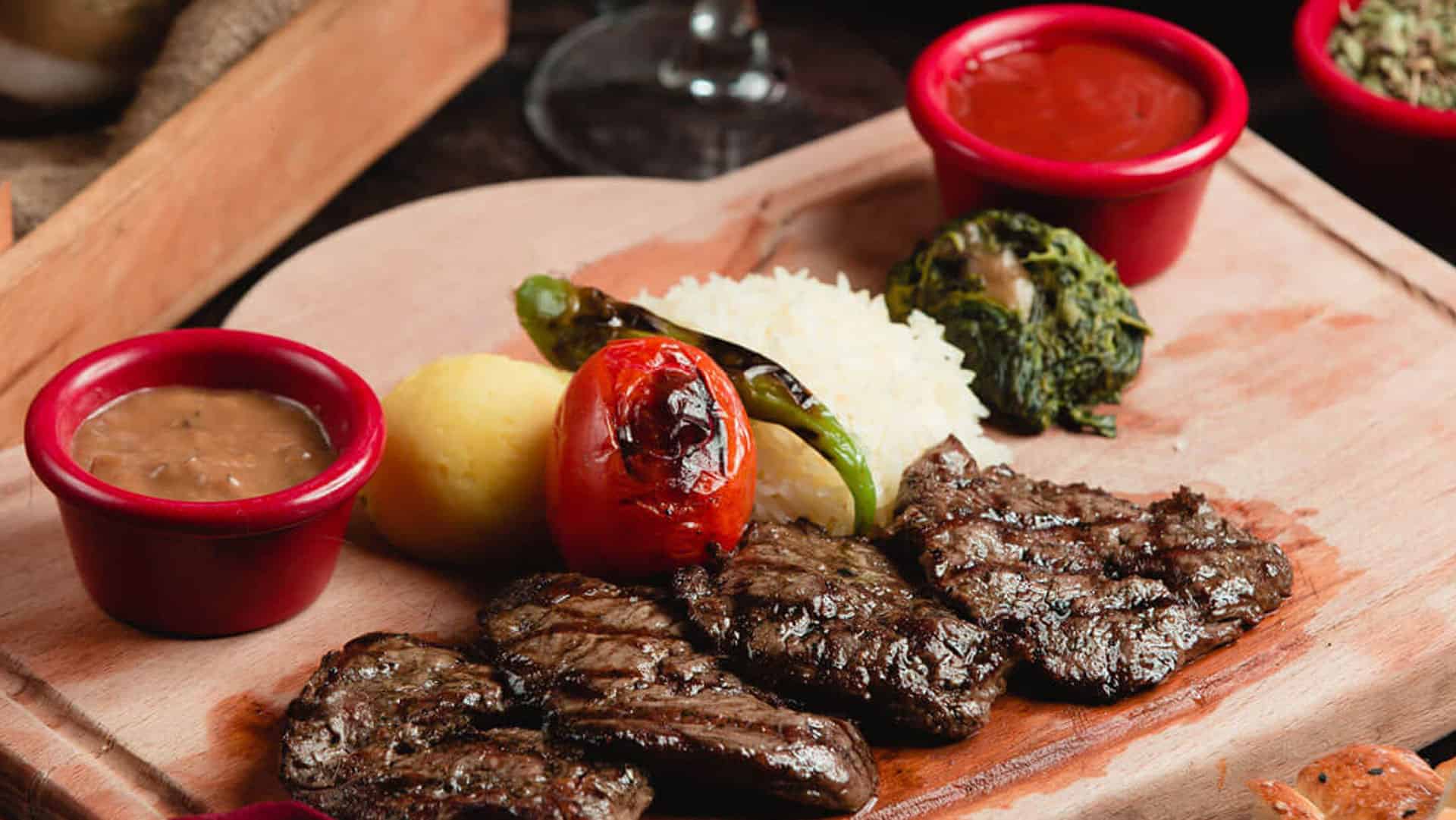
As beef has a comparatively stronger taste and is leaner than all other types of meat (leaving aside game from older animals with the so-called “goût sauvage”), beef is basically predestined for red wines. Red wines with tannic acid and a higher or high alcohol content therefore feel very comfortable in the presence of lean and tender beef. Silky red wines harmonize well with quick-roasted beef, while both young and mature, full-bodied red wines know how to shine with braised beef.
Wine recommendations from the best Swiss winery of the decade
| Dish | Side dish | Wine type | Wine type |
| Pot roast | Roast potatoes, ratatouille | Fruity red wine | Syrah Diego Mathier AOC Valais |
| Fillet | Gratin dauphinois, braised vegetables | Light red wine with a subtle interplay of aromas | Pinot Noir Lucifer AOC VS |
| steak | French fries, salad | Strong, tannic red wines | Cabernet Sauvignon Adrian Mathier AOC VS |
| Roast beef | fried potatoes, remoulade sauce | Full-bodied red wine | Cabernet Sauvignon Adrian Mathier AOC VS |
| Boiled beef | Boiled potatoes, steamed seasonal vegetables | Exception: no red wine, but a complex white wine | Cuvée Madame Rosmarie Mathier white AOC VS |
| Beef cutlet | Fresh, coarse tomato sauce, risotto with herbs and mushrooms | Strong red wine with velvety tannins | Folissimo AOC VS |

